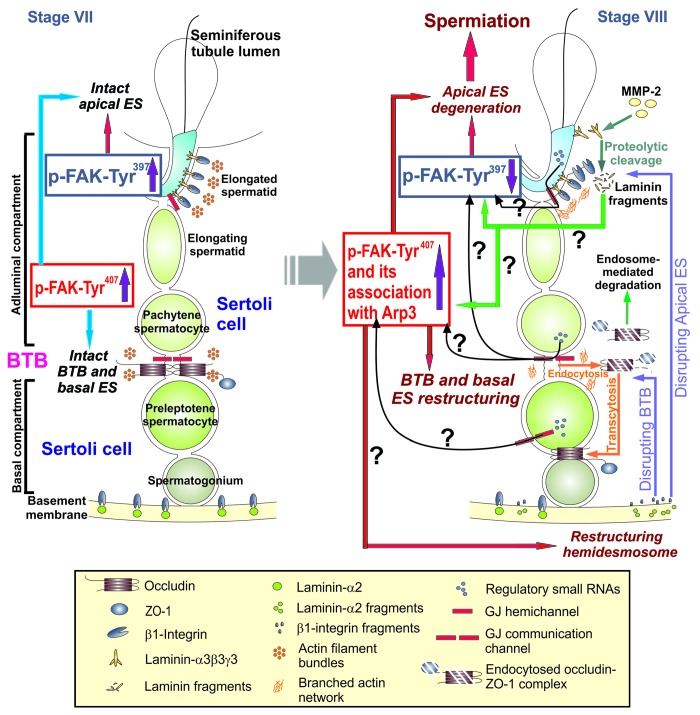Figure 1. A schematic drawing of a hypothetic model depicting the likely role of two FAK phosphorylated forms, p-FAK-Tyr397 and p-FAK-Tyr407, in conferring plasticity to the actin filament bundles at the ES via their stage-specific and spatiotemporal expression in the seminiferous epithelium during the epithelial cycle of spermatogenesis. On the left panel, it is a schematic drawing of the seminiferous epithelium of a stage VII tubule wherein intact filament bundles at the apical ES and the basal ES are maintained by an upregulation on the expression of p-FAK-Tyr397 and p-FAK-Tyr407, respectively, via the intrinsic activity of Eps8 and other actin filament bundling proteins (e.g., palladin) to confer ES adhesion function at both sites. However, in stage VIII tubules (see right panel), downregulation of p-FAK-Tyr397 but changes in the association of p-FAK-Tyr407 with Arp3 (or with other actin bundling proteins)―even though the expression of p-FAK-Tyr407 remains upregulated at this stage―favor re-organization of the actin filament bundles (such as from their “bundled” to their “un-bundled/branched” configuration in the microdomain within the BTB (see text for details) to induce BTB restructuring at the basal ES to accommodate the transport of preleptotene spermatocytes across the BTB and spermiation at the apical ES. Many questions (annotated by “?”) remain unanswered as noted in this hypothetical model. For instance, it is not known if biologically active fragments released at the apical ES during spermiation or at the hemidesmosome can regulate the spatiotemporal expression of p-FAK-Tyr397 and p-FAK-Tyr407, and/or the interaction between p-FAK-Tyr407 and actin regulatory proteins (e.g., Arp3) to recruit these proteins to the site to induce actin filament reorganization. Also, it remains to be determined if small RNAs that are abundantly found in germ cells are being used to regulate the spatiotemporal expression of these two activated FAK forms in the apical ES-BTB-basement membrane functional axis. Also, it remains to be determined if these small regulatory RNAs are being transported from germ cells to Sertoli cells via gap junctions at different stages of the epithelial cycle.

An official website of the United States government
Here's how you know
Official websites use .gov
A
.gov website belongs to an official
government organization in the United States.
Secure .gov websites use HTTPS
A lock (
) or https:// means you've safely
connected to the .gov website. Share sensitive
information only on official, secure websites.
